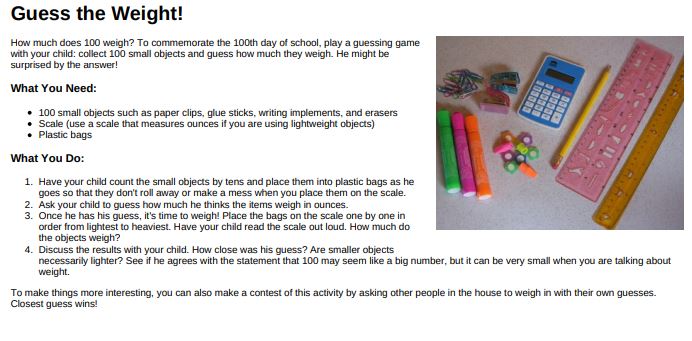
Guessing Weights Lesson Plan main
Incorporating interactive and hands-on activities in educational settings is a proven way to engage students and enhance their learning experience. One such activity is the “Guessing Weights Lesson Plan,” which promotes critical thinking and estimation skills. It also introduces students to the concept of weight measurement. We will explore a complete lesson plan that encourages students to guess the weights of objects. It will foster the mathematical abilities of students while making learning enjoyable.
Understanding the Objective
The objective of the guessing weights lesson plan is to help students develop their estimation skills. Along with gaining a better understanding of weight measurement. By engaging in this activity, students will learn to make educated guesses. They will also learn to compare them to the actual weights of objects. Hence they will enhance their critical thinking and observation skills.
Materials Required To conduct the guessing weights lesson plan
You will need the following materials:
- A variety of small objects, such as paper clips, glue sticks, writing implements, erasers, and other classroom items.
- A scale that measures weights, preferably in ounces.
- Plastic bags or containers to hold the objects.

Wonderful 104 INSPIRATIONAL QUOTES
Step-by-Step Guessing weights lesson plan
Step 1: Introduction and Explanation (10 minutes)
Begin by introducing the concept of weight measurement to the students. Explain that weight is a measure of how heavy an object is. And this is typically measured in units such as ounces or grams. Provide examples of objects with different weights to give students a reference point.
Step 2: Guessing Weights Activity (20 minutes)
Divide the students into small groups and distribute the small objects among them. Instruct each group to count and organize the objects into plastic bags or containers.
Step 3: Estimation (10 minutes)
Ask each group to discuss and make an estimation of the total weight of the objects they have collected. Encourage them to think critically and make an educated guess based on their observations and prior knowledge.
Step 4: Weighing (15 minutes)
Guide the groups to take turns placing their bags or containers on the scale and recording the weights. Allow them to read the scale-out loud and compare the actual weights to their estimations. This step promotes active learning and reinforces the concept of weight measurement.
Step 5: Reflection and Discussion (10 minutes)
Gather the students back together and facilitate a discussion about their estimations and the actual weights. Encourage them to reflect on their reasoning and the factors that may have influenced their estimations. Discuss whether their guesses were close or far off. You can ask them to share any surprises or insights they gained from the activity.
Extension and Variations in guessing weights lesson plan
- To add an extra challenge, you can introduce objects with varying weights. You will ask students to rank them from lightest to heaviest.
- Incorporate a graphing activity where students create bar graphs to represent the actual weights and their estimations.
- Connect the activity to real-life scenarios. It’s by discussing the importance of weight measurement in everyday situations, such as cooking or shipping packages.
The guessing weights lesson plan provides an engaging and interactive learning experience for students. Which promotes critical thinking, estimation skills, and the understanding of weight measurement. By incorporating hands-on activities and encouraging reflection, this lesson plan nurtures students’ mathematical abilities. It fosters a curiosity for exploring the world around them. Implement this lesson plan in your classroom to make learning an exciting adventure that inspires lifelong learning.



